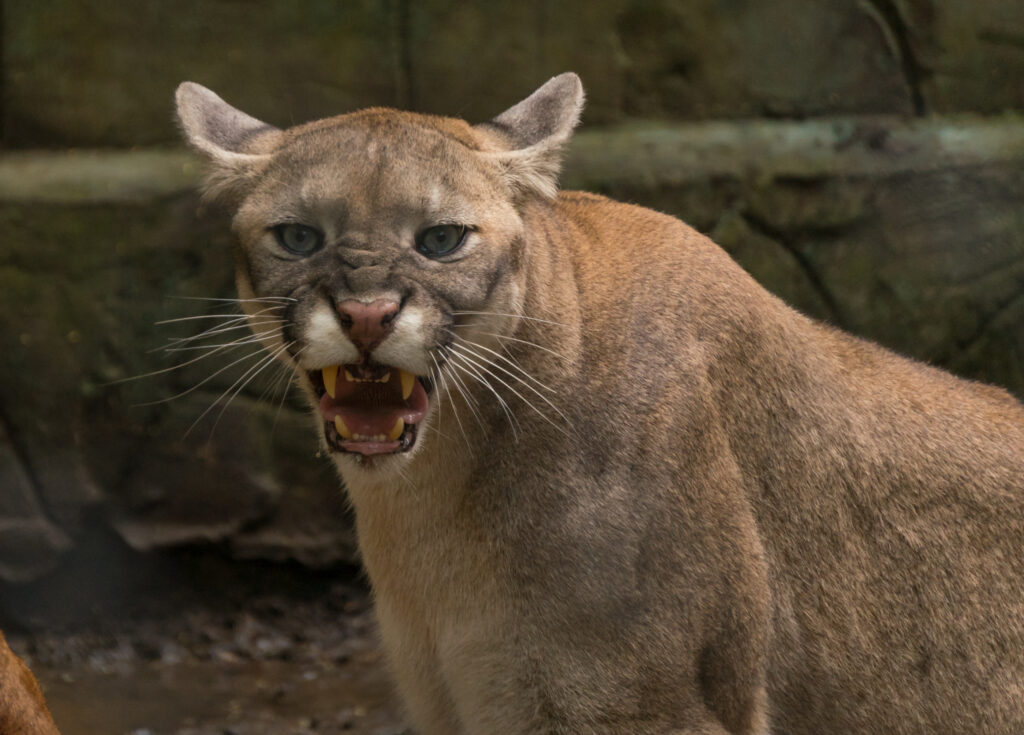October 1, 2021 / Esther Choy

This beautiful Florida panther is in a mood.
Three years ago, I was visiting my favorite art museum, which was hosting a traveling photography exhibit. The exhibit was of portraits. Some were self-portraits (“selfies” from decades before the smartphone), with the subject telling the story of who they were in that moment through attire, expression, setting, and body language. Others were portraits of well-known icons in dramatic regalia or simply doing ordinary, everyday tasks, like reading the newspaper in a bathrobe, with a cup of coffee. Still others were friends or family of the photographer, their faces full of emotion and character. The visual storytelling was charming, unsettling, and always engaging.
Images are a powerful medium for stories. You’ve seen unforgettable ones: V-J Day in Times Square, Migrant Mother, and the mid-20th century civil rights marches. Images warn us about the state of our polar ice caps and the cruel realities of war. They help us feel the ecstasy of winning a gold medal or the joy of a long-awaited birth. Check out some of these photos from the Tokyo Olympics; joy, anxiety, strain, fanfare, and intense concentration shout to us from these images.

Can you HEAR this photo?
The best images don’t just present visual data; there’s a story within them. The story, not the data, is what provokes emotion—and action.
William Freund has always known this. He left a career as a commercial pilot to work 25 years in his family’s 107-year-old business, all while nurturing a deep love for photography. Spurred by his belief in the power of photography and his concern for wildlife conservation and the ecosystem in his native Florida, Freund started the fStop Foundation, a nonprofit that inspires action through visual storytelling. In January 2020, he began dedicating himself full time to the cause.
Freund believes that education drives change in the conservation realm. He noticed an opportunity to provide that education in a compelling, interesting, and effective way: filmmaking. He recruited his son Max to help make the film, but knew he needed further help in writing the script. That is when he found the resource he says “played a critical part in the writing of the story”: Esther’s business storytelling book, Let the Story Do the Work. Freund says, “I had the book right next to me the whole time we were writing the story and throughout the editing process as we tweaked and adjusted it.” Lessons such as IRS, the five basic plots of storytelling, and other tools and frameworks provided an easy-to-use road map.
Using the book’s lessons, William and Max Freund completed The Need for Connectivity, which focuses on stories about the Florida panther and its key importance to the Florida ecosystem. Though they were proud of their film, they were to be further surprised by its success as it won multiple film festival awards and then aired on a local PBS station. Freund is excited about its impact in driving change, as well as about the prospect of making another documentary. “We have a lot more learning to do and we are already working on our next film. [You] can count on your book being right there next to us as we continue our work…and letting the story do the work of helping us save the panthers, and Florida!”
Freund recognized that he needed to carefully construct a persuasive narrative with his visual storytelling. The stakes were—and are—high! Though he was unsure of how to start, he learned, attempted, practiced, and succeeded.
Do you also have a passion project or career dream? Unsure of how to win support or change hearts and minds? Leadership Story Lab has the storytelling resources you need. Talk to us about your plan and find out how we can help you make it a reality.
Better Every Story
Leadership Transformation through Storytelling
"This is an amazing and insightful post! I hadn’t thought of that so you broadened my perspective. I always appreciate your insight!" - Dan B.
Get Esther Choy’s insights, best practices and examples of great storytelling to your inbox each month.




